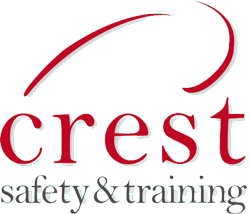Yesterday Western Australia adopted the WHS Act 2020 and its supporting Regulations. This blog provides a timeline of how we arrived at this new piece of legislation.
Overview
In Australia the Constitution empowers each State and Territory to enact their own occupational health and safety legislation. That is, each state has its own work health and safety laws and Regulator to enforce them.
In Western Australia the regulatory department is DMIRS, Department of Mines, Industry Regulation and Safety.
Safe Work Australia is the federal advisory body. They do not have any regulatory power but assist the states in the development of policy.
A Brief History of WHS legislation in Australia
Australia’s health and safety law has historically followed British reforms. A review of British legislation occurred in the 1970’s by Lord Robens. The British Robens Report suggested that there was “too much law” and a lack of “personal responsibility”.
Among Robens recommendations were:
- Reduction in the legislative instruments, amalgamating the statutory provisions into one Act
- The introduction of general duties for employers and employees
In Western Australia we followed the British Robens reforms with the introduction of the Occupational Safety and Health Act 1984 (OSH Act) for general workplaces.
In 2002 a review by Robert Laing was conducted which saw further changes to the OSH Act. This included
- The addition of provisions to allow government agencies to be prosecuted
- The inclusion of labour hire arrangements
- The introduction of Provisional Improvement Notices (PINs) for Safety and Health Representatives
- The increase in penalties
- The introduction of gross negligence penalties including imprisonment
In 2008 a national review recommended to the Workplace Relations Ministers Council harmonisation of WHS legislation through the development of model legislation. This was then endorsed by the Council of Australian Governments (COAG). COAG agreed to the development of model Act, Regulations and Codes of Practice for each state and territory to adopt in order to achieve national consistency.
In 2008, the advisory body Safe Work Australia was developed. This agency had previously existing under different banners of the Australian Safety and Compensation Council (ASCC) and the National Occupational Health and Safety Commission (NOHSC). Safe Work Australia was targeted with developing this model legislation for each state and territory to adopt.
In 2009 the Draft Model WHS Bill released for comment. In 2010 Safe Work Australia members endorsed the amendments and the final version was published.
2012 was set as the date for the model laws to be adopted in each state and territory. The Commonwealth, Australian Capital Territory, New South Wales, Northern Territory and Queensland implemented the model WHS laws on 1 January 2012. South Australia and Tasmania implemented the model WHS laws on 1 January 2013. Victoria is the only jurisdiction that has not implemented the model WHS legislation.
In November 2020, Western Australia assented the Model WHS Bill. Safe Work Australia make amendments to the model legislation. The Western Australian WHS Act is based on the 2019 version of Safe Work Australia’s model WHS Bill. The new WHS Act commenced with the gazetting of the supporting Regulations on March 31 2022.
